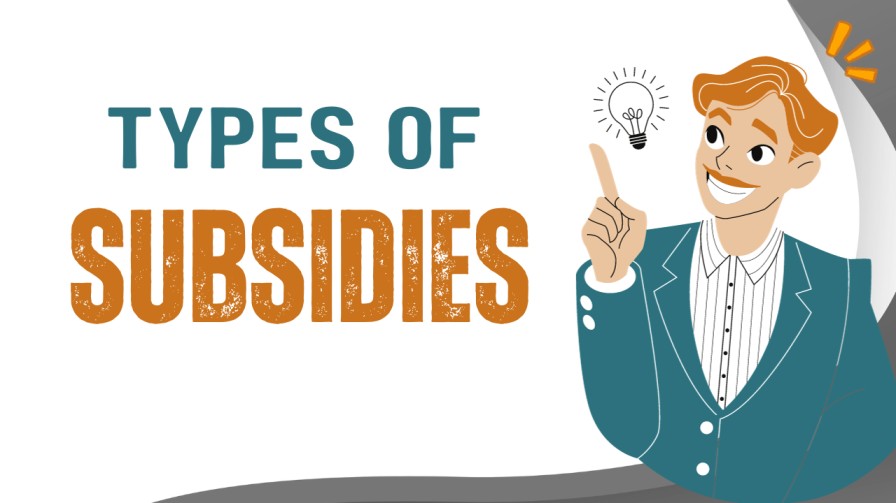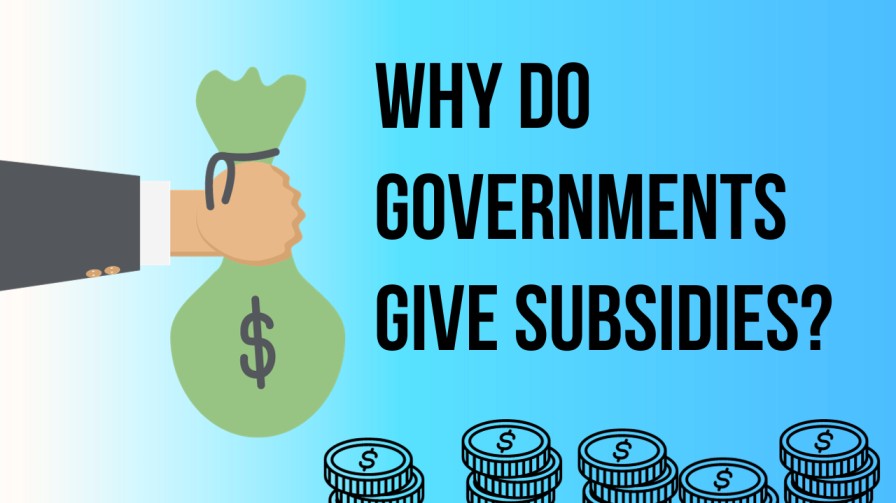Introduction of why do governments give subsidies:
In the complex world of economics, one term that frequently surfaces is “subsidies.” Governments across the globe engage in providing financial support to various sectors, industries, and individuals. But why do governments give subsidies, and what role do these financial incentives play in shaping the economic landscape? In this comprehensive guide, we will delve deep into the reasons why do governments give subsidies, exploring the intricacies and shedding light on various facts regarding this.
Table of Contents
1. Understanding Subsidies:
a. Definition and Types
A subsidy is a form of financial assistance provided by the government to support certain sectors, industries, or individuals. It aims to promote economic activities that may not survive or thrive without additional financial aid. Government Subsidy comes in various forms, including direct cash transfers, tax breaks, price supports, and research grants.
- Direct Cash Transfers: Governments may provide direct monetary support to individuals or businesses, ensuring they can meet basic needs or invest in essential activities.
- Tax Breaks and Credits: Governments often incentivize specific behaviors or industries by offering tax breaks or credits. This reduces the overall tax burden on targeted entities.
- Price Supports: Governments may set minimum prices for certain goods or services, providing subsidies to producers when market prices fall below these levels.
- Research and Development Grants: To encourage innovation, governments may provide subsidies for research and development activities, fostering technological advancements.
b. Historical Evolution
This questions always arise even from historical significance that why do governments give subsidies. The concept of subsidies has evolved over centuries. Historically, governments provided support to key industries during times of war or economic downturns. In the modern era, subsidies have become integral to economic policies, addressing various socio-economic objectives and challenges.
2. Economic Objectives of Subsidies
a. Stimulating Economic Growth
Government Subsidies can kickstart economic activity in struggling sectors, fostering growth, and preventing economic stagnation.
b. Job Creation
By supporting industries, governments contribute to job creation, reducing unemployment rates and boosting overall economic well-being.
c. Addressing Market Failures
Why do governments give subsidies because government Subsidies help correct market failures, ensuring the provision of public goods and services that the market might otherwise neglect.
d. Encouraging Innovation
Research and development subsidies promote innovation, driving technological advancements and enhancing a nation’s competitiveness.
e. Promoting Social Welfare
Subsidies are often directed towards ensuring social equity, improving access to essential services such as healthcare, education, and housing.
3. Sectors Receiving Subsidies
a. Agriculture
Agricultural subsidies aim to support farmers, stabilize food prices, and ensure food security. They may include direct payments, price supports, and subsidies for inputs.
b. Energy
In energy sector why do governments give subsidies because it encourage the use of renewable sources, enhance energy security, and offset the costs of production.
c. Healthcare
Subsidies in healthcare help ensure affordable access to medical services, pharmaceuticals, and equipment.
d. Education
Education subsidies can take the form of scholarships, grants, or reduced-interest loans, promoting access to education for all.
e. Housing
Governments may subsidize housing to address issues of affordability, particularly for low-income individuals and families.
f. Transportation
Subsidies in transportation often target public transportation systems, making them more affordable and reducing traffic congestion.
4. Global Perspectives on Subsidies
a. Developed vs. Developing Countries
While developed countries may use subsidies to maintain competitiveness, developing countries often employ subsidies to kickstart industries and achieve economic development.
b. Subsidy Policies in Key Economies
Different economies adopt varying approaches to subsidies, with some focusing on free-market principles and others relying heavily on state intervention.
5. Advantages and Disadvantages of Government Subsidies
a. Benefits
– Economic Stimulus
– Job Creation
– Innovation
– Social Welfare
b. Drawbacks
– Market Distortions
– Budgetary Strain
– Potential for Abuse
– Inefficiencies
c. Criticisms and Controversies
Subsidies often face criticism for favoring certain industries, distorting market mechanisms, and creating dependency among recipients.
6. Types of Subsidies

a. Direct Cash Transfers
Governments may provide financial aid directly to individuals or businesses, ensuring immediate support.
b. Tax Breaks and Credits
Tax incentives encourage specific activities by reducing the tax burden on targeted entities and also saves the tax.
c. Price Supports
Minimum price guarantees help stabilize markets and protect producers from volatile price fluctuations.
d. Research and Development Grants
Investing in innovation through subsidies stimulates technological progress and enhances competitiveness.
7. Effect of Subsidies on Consumers and Businesses
a. Affordability and Accessibility
Why do governments give subsidies because it often lead to lower prices for consumers, making essential goods and services more accessible.
b. Market Competition
Subsidies can impact market competition by influencing the competitiveness of subsidized entities.
c. Long-Term Effects
The long-term effects of subsidies may include sustainable economic growth, increased competitiveness, and improved living standards.
8. Government Subsidies and the Environment
a. Renewable Energy Subsidies
Governments incentivize the adoption of renewable energy sources through subsidies, contributing to environmental sustainability.
b. Sustainable Practices
Subsidies may promote eco-friendly practices and technologies, aligning economic development with environmental conservation.
9. Case Studies: Successful Subsidy Programs
a. The Green Revolution in India
Agricultural subsidies in India played a crucial role in the Green Revolution, transforming the country’s food production capabilities.
b. Subsidies in the European Union
The European Union employs a range of subsidies to support agriculture, regional development, and innovation.
c. Singapore’s Innovation-Driven Subsidies
Singapore’s success in becoming a global innovation hub is partly attributed to strategic research and development subsidies.
Conclusion
Government subsidies are a multifaceted aspect of economic policies, playing a pivotal role in shaping the destinies of nations and industries. This comprehensive guide has explored the reasons behind governments providing subsidies, the diverse sectors impacted, the global perspectives, and the pros and cons associated with such financial incentives. As we unravel the mysteries behind government subsidies, it becomes clear that these interventions are essential tools for achieving economic, social, and environmental objectives.
Why do governments give subsidies FAQs
a. Why do governments give subsidies?
Governments provide subsidies to achieve various economic objectives, including stimulating growth, creating jobs, addressing market failures, encouraging innovation, and promoting social welfare.
b. How are subsidies funded?
Subsidies are funded through government budgets, often derived from tax revenue. The funds are allocated to specific sectors or activities to provide financial support.
c. Are all subsidies financial in nature?
No, subsidies can take various forms, including direct cash transfers, tax breaks, price supports, and research and development grants.
d. Can subsidies lead to market distortions?
Yes, subsidies have the potential to distort markets by influencing prices, production levels, and competitiveness. This can create inefficiencies and impact fair competition.
e. What is the role of transparency in subsidy distribution?
Transparency is crucial in subsidy distribution to ensure fair allocation, prevent corruption, and build public trust in the government’s subsidy programs.
f. How do subsidies impact inflation?
Subsidies can influence inflation, especially if they lead to increased demand without a corresponding increase in supply. However, their impact depends on various factors, including the overall economic context.
g. Are there alternatives to subsidies for achieving economic goals?
Yes, alternatives include deregulation, tax reforms, and direct investments. Each option has its advantages and disadvantages, and the choice depends on specific economic goals and contexts.
h. Do subsidies always achieve their intended objectives?
While subsidies aim to achieve specific objectives, their success depends on various factors such as effective implementation, monitoring, and adaptation to changing economic conditions. Subsidies may not always produce the desired outcomes.






